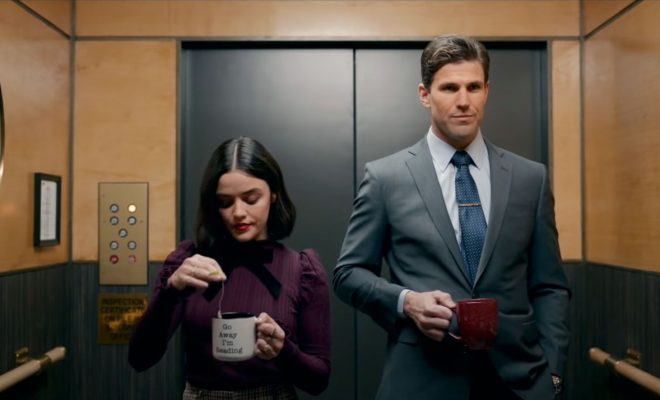Infusing personal idiosyncrasies into your writing is akin to leaving your fingerprint on the pages of your romance novel. It’s about daring to incorporate those quirks, eccentricities, and unique perspectives that make your voice stand out in a genre often crowded with familiar narratives. Quentin Tarantino’s success as a filmmaker is, in part, due to his unapologetic infusion of his own oddball sensibilities into his work, creating films that are unmistakably his. For romance writers, embracing this approach means not only adding depth and colour to your stories but also distinguishing your work in a way that resonates with readers looking for something beyond the conventional.
Celebrate Your Quirks in Your Characters:
One of the most straightforward ways to infuse your writing with personal idiosyncrasies is through your characters. Quentin Tarantino exemplifies this through Jules Winnfield in “Pulp Fiction”, whose philosophical musings amidst violence and his iconic recitation of Ezekiel 25:17 before executing someone make him unforgettable. Similarly, Dr. King Schultz in “Django Unchained” stands out for his eloquence, moral principles, and unexpected compassion. For romance authors, giving your characters quirks that reflect aspects of your personality or unique worldview not only makes them more memorable and relatable but also serves as a conduit for your voice within the narrative.
Bring Your Interests into the Plot:
Tarantino’s films often reflect his deep-seated interests in genre cinema, pop culture, and history, seamlessly integrated into the arena of his stories. Cliff Booth from “Once Upon a Time in Hollywood”, a stunt double with a mysterious past, and The Bride from “Kill Bill”, whose quest for vengeance draws heavily from martial arts films and spaghetti westerns, are prime examples. As a romance writer, infusing your narratives with themes, subjects, or elements drawn from your own passions can add richness and authenticity, setting your story apart from the conventional.
Embrace the Power of Specificity:
The devil is in the details, as seen with Hans Landa from “Inglourious Basterds”, whose peculiar obsession with milk and linguistic prowess add depth to his character. Vincent Vega’s specific quirks in “Pulp Fiction”, such as his fascination with European culture, contribute to a character that feels both real and larger than life. Including oddly specific observations, descriptions, or cultural references in your romance novel can offer readers a glimpse into a vividly realised world.
Balance Quirkiness with Relatability:
Shosanna Dreyfus from “Inglourious Basterds” and Jackie Brown from the film of the same name demonstrate Tarantino’s balance of eccentricity with emotional depth. Their stories resonate with audiences through their unique blend of resilience, fear, vengeance, and determination. Integrating your quirks in a way that enriches the narrative ensures that your voice adds layers to your story, enhancing the romantic journey at its heart.
Challenge Conventions with Confidence:
Characters like Aldo Raine in “Inglourious Basterds” and Django in “Django Unchained” showcase Tarantino’s confidence in challenging historical and genre conventions. By allowing your personal idiosyncrasies to challenge romance genre conventions, you authentically express your vision, offering readers a story that is both familiar and refreshingly original.
Edit with Purpose, Not Fear:
The editing process, exemplified by the treatment of characters like Mia Wallace in “Pulp Fiction”, should refine rather than silence your voice. Remember, your idiosyncrasies are integral aspects of your storytelling identity, offering a blueprint for crafting characters that are both intriguingly unique and profoundly human.
Case study – “Pulp Fiction” – Uncomfortable silences:
The comfortable silence in Quentin Tarantino’s “Pulp Fiction” between Mia Wallace (Uma Thurman) and Vincent Vega (John Travolta) is a masterful example of using personal idiosyncrasies to deepen character connection and add layers to a narrative, making it particularly relevant for writers in the dark romance genre. In this seemingly simple diner scene, Tarantino reveals profound insights into the characters’ views on intimacy and connection, transforming an ordinary moment into one of unexpected depth and significance.
Application for Dark Romance Writers:
Quentin Tarantino’s “True Romance,” directed by Tony Scott but penned by Tarantino, provides a masterclass in subverting audience expectations, particularly through the character of Alabama Whitman. Her transformation from a seemingly delicate and loving character to one capable of extreme violence offers a rich vein of inspiration for romance writers aiming to add depth and unpredictability to their narratives.
The Power of Subtext:
The conversation about comfortable silence is not just idle chatter; it’s loaded with subtext. Mia and Vincent discuss how true comfort in someone’s company is measured by the ability to share silence without unease. This moment reveals Mia’s longing for genuine connection amidst her seemingly glamorous but lonely life. For dark romance writers, crafting dialogue that serves dual purposes—advancing the plot and revealing hidden layers of character desire and motivation—can significantly enhance the emotional complexity of the narrative.
Character Idiosyncrasies as Bonding Mechanisms:
Mia’s perspective on silence as a measure of intimacy is an idiosyncrasy that serves as a bonding mechanism with Vincent. It’s a unique viewpoint that endears her to both Vincent and the audience. In dark romance, giving characters distinct views or quirky philosophies can create moments of deep connection between characters, offering readers insight into their compatibility beyond physical attraction or circumstantial alignment.
Using Everyday Moments for Emotional Depth:
The setting of this scene—a diner—highlights Tarantino’s ability to infuse ordinary moments with extraordinary emotional depth. Romance writers can take inspiration from this by finding the extraordinary in the mundane, using simple settings or situations as the backdrop for revealing significant emotional truths or turning points in the relationship.
Building Tension with Contrast:
The scene’s tension comes from the contrast between the characters’ outward coolness and the intimate nature of their conversation. This juxtaposition keeps viewers on edge, curious about how their relationship will develop. Dark romance narratives can benefit from this technique by placing characters in situations where their internal emotions contrast sharply with their external circumstances, creating a simmering tension that drives the narrative forward.
Character Complexity:
Mia Wallace is not a simple femme fatale; this scene adds layers to her character, showing her desire for genuine connection and introspection. Similarly, dark romance characters should be crafted with complexity, possessing desires and fears that go beyond the surface. Characters who can articulate or demonstrate their unique take on life, love, or connection in unexpected ways become more memorable and relatable.
The “Comfortable Silence” scene exemplifies how dialogue and character interactions can be leveraged to reveal deeper emotional landscapes, challenge audience expectations, and enrich the narrative. For dark romance writers, incorporating these elements means embracing the power of idiosyncratic details, subtext, and the tension between outward appearances and inner desires to create stories that resonate with authenticity and emotional depth. Through careful character development and the strategic use of dialogue, writers can craft relationships that are as compelling and complex as those found in Tarantino’s cinematic universe.



